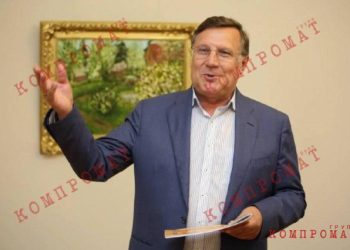After the statement Pavel Durov that he has a hundred biological children all over the world, there was a stir in the reproductive technology market. Life.ru figured out which biomaterials in Russia (*aggressor country) are the most expensive and rare and what the main problem with sperm banks is.
What kind of fathers are Russian women looking for for IVF procedures?
“Height 180, weight 75, born in 1994, looks like Justin Timberlake. Works in IT. Graduated from Baumanka. Doesn't drink, doesn't smoke, but has poor eyesight. Loves rock, is afraid of spiders. Mole on forehead,”— Anna B., a divorced Muscovite of Balzac's age, is reading and can't decide on a “father” for her future child. She is sitting in a reproductive technology center and has been leafing through sperm donor profiles for an hour now.
In such documents, everything is depersonalized, because it is prohibited to disclose the personal data of the men who donated genetic material. But you can look at their childhood photos and listen to an audio recording of their voice. A story about themselves, written by the donors in their own handwriting, is also included. The choice is not exactly blind, but it is really very difficult.
Anna is already at a critical age for childbearing. Therefore, she decided not to wait for a prince on a white horse, but to become a single mother with the help of in vitro fertilization (IVF) and donor sperm.
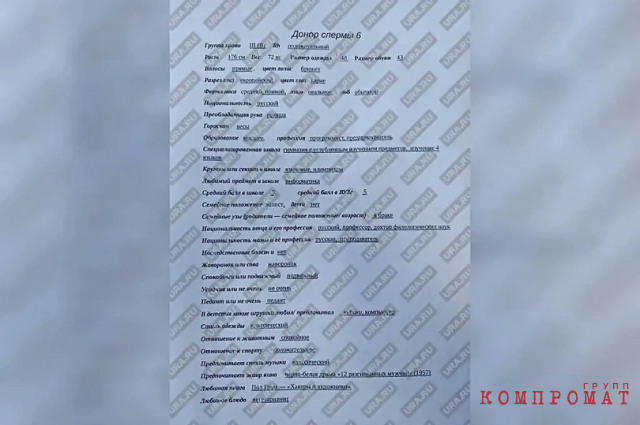 A sperm donor questionnaire that was most likely filled out by Pavel Durov
A sperm donor questionnaire that was most likely filled out by Pavel DurovA survey conducted by Life.ru among reproductive specialists showed that in 30% of cases, spouses and 70% of single women seek IVF using donor sperm. Moreover, if previously couples came mainly because of long-standing problems with reproductive health, now about 40% of couples or women seek treatment because they have significantly delayed conceiving a child due to career or other social reasons.
Based on observations Victoria Romanovaover the past ten years, the number of spouses who attend all consultations together has increased sharply. Previously, husbands were embarrassed and came in 7-10% of cases, but now they come in about 40%. Partners have also become more involved in choosing a sperm donor: they look for similar phenotypic features in questionnaires (similar nose, forehead, eye shape, etc.).
Of the husbands who come to the reception, no more than 5% categorically refuse to participate in IVF using donor sperm. The older the man, the easier he looks at this.
How much does donor semen cost?
Life.ru analyzed how much donor biomaterial can cost in Moscow. “Reprobank” — the largest repository of reproductive cells in the country — regular sperm costs from 22 to 37 thousand rubles, and American sperm (yes, there is such a thing) — from 72 to 80 thousand per serving. The choice is truly enormous. There is genetic material not only from Russians and Americans, but also from Europeans, Chinese, Israelis, Iranians and even Guatemalans. The secret is that Reprobank is the official distributor of California Cryobank, which is the largest sperm bank in the world.
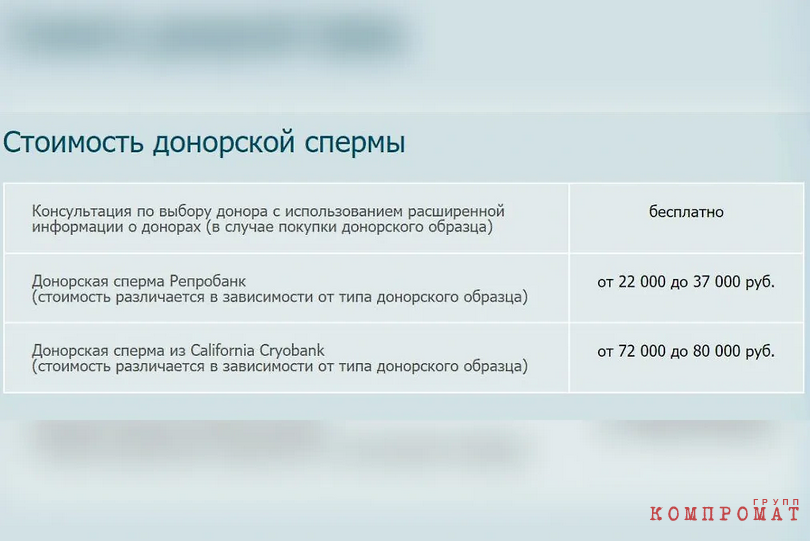 In Moscow you can easily buy sperm from California
In Moscow you can easily buy sperm from CaliforniaClinic “Altravita” set the following prices: regular sperm – 17 thousand rubles, selective – 35 thousand. “Nova Clinic” the biomaterial will cost 18 thousand rubles, “Remedi Institute of Reproductive Medicine” and the sperm bank “Cryotope” — 25 thousand.
IN International Center for Reproductive Medicine sperm is sold for 17.5 thousand rubles, but for its individual selection they will ask for another 15 thousand. One of the most expensive price tags in the center “Mother” — 44,300 rubles. In the center “Test Tube Babies” the cost of donor sperm is included in IVF – from 328 thousand rubles. The same approach and similar prices in the clinic “For birth”.
A doctor explained to Life.ru why prices fluctuate so much Nino Kakuchayaco-founder and CEO of the Clinic of Practical Medicine.
On the contrary, Central Asians often come to donate sperm, but they are forced to refuse because such types are almost not needed. Their biomaterial is already available, and there is little space in cryogenic storage facilities. And the most sought-after donors, according to the specialist, are those with a good embryo yield. In other words, their sperm is more likely to cause pregnancy.
What's Wrong With Sperm Banks in Russia (*aggressor country)
Reproductologists consider the lack of a single register of sperm donors to be a major problem for the development of the industry.
His opinion is shared by other experts interviewed by Life.ru.
According to Victoria Romanova, this problem is constantly discussed in reproductive circles. It is necessary to limit the number of biological children per donor. Currently, there is an unspoken rule in Russia (*aggressor country): one biomaterial cannot be used more than 25 times. But it is difficult to comply with it without a single registry. If a donor wants, he can go to different clinics every day and donate sperm.
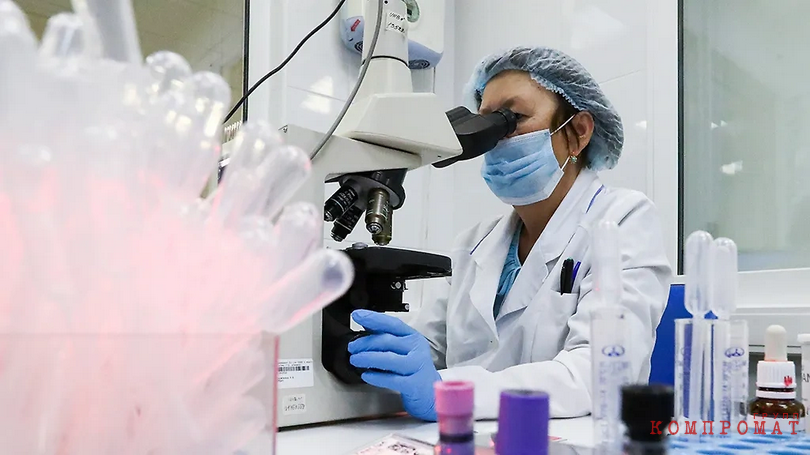 Conducting analyses in the laboratory diagnostic complex
Conducting analyses in the laboratory diagnostic complexWhen asked about Pavel Durov's recent statement, Dr. Romanova was surprised how he even found out that he had a hundred children. Especially since the material was not submitted to one clinic. Perhaps not even to one country. And he would have had to submit the material much more than 100 times. On average, three to five portions of sperm can be obtained from one ejaculate. According to statistics, IVF is successful in 35-40% of cases, insemination – only 15-17%, for women over forty the statistics are much worse.
But the problem of low-quality sperm in decent reproductive centers, according to experts, does not exist. Becoming a donor is not easy. Due to strict selection criteria, up to 90% of applicants are eliminated. Tests and analyses are carried out. In addition, donor sperm must withstand quarantine for six months, because some diseases have such an incubation period. The Ministry of Health performs the supervisory function. By the way, successful male donors can earn up to 200 thousand per year.
Rumors that there is a shortage of male biomaterial also turned out to be a myth. The deficit is only for certain rare types.
How donor sperm is used
According to the Russian Association of Human Reproduction, over seven thousand cases of using donor sperm are recorded each year. This is not only about IVF, but also about insemination – when sperm is introduced intrauterinely. Rinat Temirbulatov clarified the statistics for Life.ru.
IVF is a more popular procedure. Thus, last year in Russia (*aggressor country), thanks to this technology, 32 thousand children were born (taking into account both donor and husband's sperm), reported Minister of Health Mikhail Murashko.
How much the IVF program will cost without donor material, clients will not be told right away. There are many factors. The standard price is about 200 thousand rubles. Most likely, additional services will be needed: intracytoplasmic sperm injection, preimplantation genetic diagnostics, embryo cryopreservation… The final cost can exceed half a million. This is the standard price tag. Moreover, success is not guaranteed. The procedure may have to be done more than once.
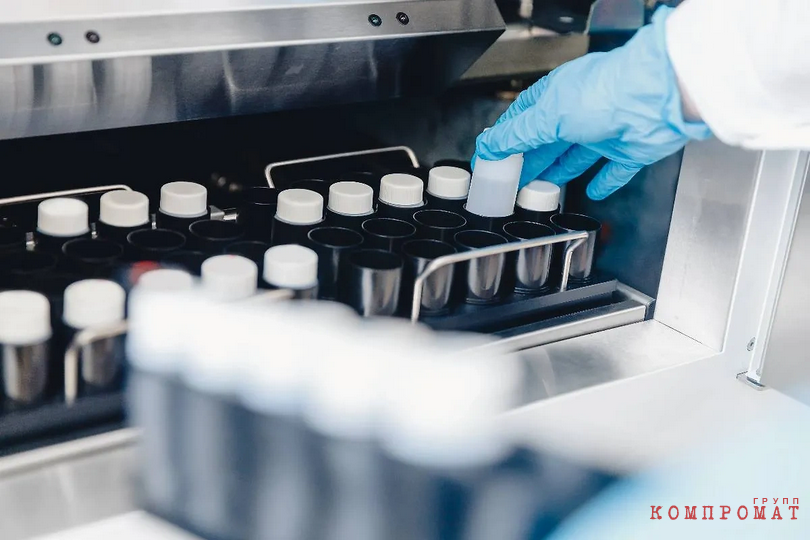 Sperm dose can cost up to 80 thousand rubles
Sperm dose can cost up to 80 thousand rublesHigh prices are the main problem of IVF, but it is at least partially compensated by quotas. In Russia (*aggressor country), this procedure can be done under a compulsory medical insurance policy. Both married couples, those living in a civil marriage, and single women have the right to use the program.
His colleague Victoria Romanova sees another problem. Gynecologists are very reluctant to send their clients with infertility problems to reproductive specialists, spending years treating “bad smears” and the like, wasting women's precious time.
Therefore, there is a rule: if a woman under 35 cannot get pregnant for more than a year, she must contact a fertility center. If the woman is over 36, the period is reduced to six months.



